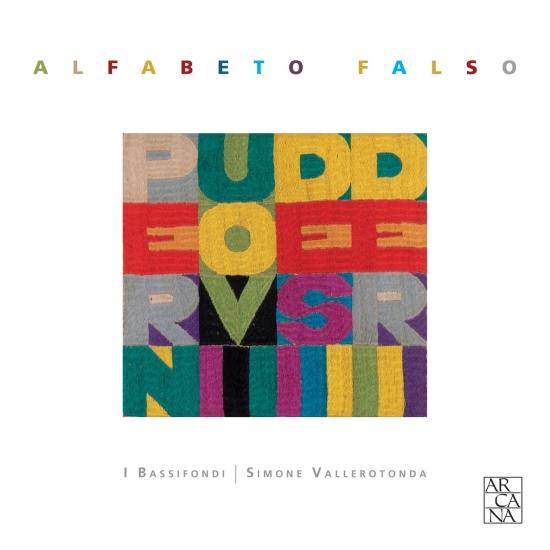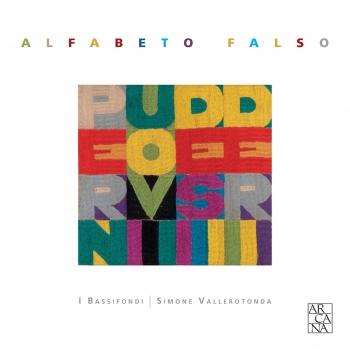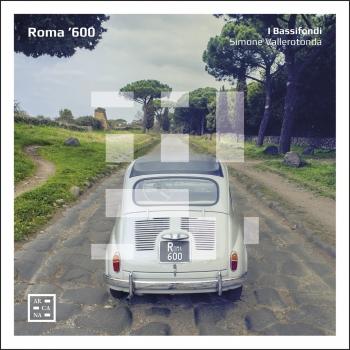
Alfabeto falso I Bassifondi & Simone Vallerotonda
Album Info
Album Veröffentlichung:
2017
HRA-Veröffentlichung:
07.07.2017
Das Album enthält Albumcover
- Giovanni Paolo Foscarini (1600-1647):
- 1Toccata detta l’innamorata01:26
- 2Gagliarda francese01:26
- 3Passacaglio per la O02:22
- Simone Vallerotonda:
- 4Impro #100:34
- Hieronimus Kapsberger (1580-1651):
- 5Sfessania01:24
- 6Passacaglia04:53
- Antonio Carbonchi:
- 7Scaramanzie02:21
- Santiago de Murcia (1673-1739):
- 8Folias Gallegas02:32
- Ferdinando Valdambrini:
- 9Capona02:33
- Alessandro Piccinini (1566-1638):
- 10Toccata cromatica03:15
- Josep María Martí Duran:
- 11Impro #200:55
- Alessandro Piccinini:
- 12Partite sopra l'aria francese detta l’alemanna01:32
- 13Corrente VI sopra l’alemanna01:22
- Simone Vallerotonda:
- 14Impro #300:19
- Santiago de Murcia:
- 15Cumbées02:08
- Angelo Michele Bartolotti (1615-1681):
- 16Passacaglia per la D03:07
- Francesco Corbetta (1615-1681):
- 17Passacaglia per la X02:46
- Hieronimus Kapsberger:
- 18Kapsberger02:19
- 19Corrente VII01:05
- Giovanni Paolo Foscarini:
- 20Aria di Firenze01:58
- 21Colascione03:34
- 22Los Impossibles03:33
- 23Impro #402:39
Info zu Alfabeto falso
The treatise Nuova inventione d’intavolatura, per sonare li balletti sopra la chitarra spagniuola (“A newly invented tablature for playing balletti on the Spanish guitar”), published in 1606 by Girolamo Montesardo, radically revolutionized the way to write and perform guitar music. For the first time, an extremely practical guitar notation was proposed: the alphabet. It consisted in the correspondence between any chord, whether major or minor, and a letter. This simplified way of writing finally enabled any amateur or professional musician who owned a guitar to play a dance or accompany a voice, by performing the “letters” written on a single stave with superimposed rhythmic information. The proliferation of works printed in alphabetical notation, including favourite tunes, ground basses, dances, was soon enormous. This “language” – conveying a precious and varied technique of rasgueado (aka “picco e repicco”, or quick strumming) capable of realizing any kind of rhythm – was a distinguishing feature for guitarists. Next to the ordinary alphabet, they used to employ a complementary alter ego of sorts: the false alphabet. It included the same chords as the former, but “dirtied” with extraneous and crushed notes (acciaccaturas). The idea of using chords as harmonic colour was therefore, for the first time, put into practice by Italian guitarists of the early 17th century, who made it their peculiar and unique element.
After the success of L'ultimo romano, his album of music for archlute from the 1718 collection of the Roman composer Giovanni Zamboni, Simone Vallerotonda presents something totally new with his Baroque power trio I Bassifondi: Alfabeto falso . Their debut album is devoted to Italian and Spanish music for guitar and theorbo from the first half of the seventeenth century.
A little-known repertory, characterised by rhythmic oddities and harmonic extravagances that challenge those of contemporary jazz. Ordinary alfabeto (alphabet) was the system used by guitarists of the period to mark chords: each letter corresponded to a single chord. But, in the false alphabet , those letters which were marked with a slash indicated chords containing dissonances, often very bold. The trio, comprising guitar/theorbo, percussion instruments and colachon, reconstructs an ensemble typical of the seventeenth century. Breathtaking rhythms, dirty chords, improvisations and variations: these are the colours they seek to convey in their sound. The beauty and the challenge of this disc lie precisely in providing an interpretation that respects everything notated in the score, and in the choice of arrangements and timbres. This music sounds modern and perhaps slightly provocative to us, but all of it was written around 1640!
Simone Vallerotonda, theorbo, baroque guitar, chitarra battente
Josep Maria Marti Duran, bass colascione
Gabriele Miracle, percussion
Keine Biografie vorhanden.
Dieses Album enthält kein Booklet












